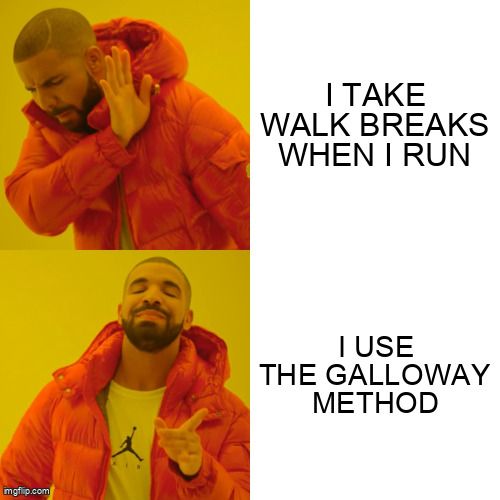Do you have run envy? Do you see people running outside and think to yourself, "I wish I could do that," only to feel defeated and deflated? You might just need the Galloway method in your life!
Whether you've just signed up for your first 5K fun run or you are an experienced runner who has crushed the Big 6, the Galloway method can help you train smart and run strong to crush your next goal!

Understand the Basics
Named after Jeff Galloway — a 1972 Olympic runner and coach — the Galloway method was developed to help runners improve endurance and avoid injury.
This approach breaks each run into planned intervals of running and walking. As your fitness improves, you’ll gradually increase your run time and shorten your walk breaks.
The key is consistency: keep your walk breaks short (about 30 seconds) and practice smooth transitions between running and walking to stay strong and injury-free.

Find Your Run-Walk Ratio
The key to success with the Galloway run-walk method is finding your unique ratio. Just like shoes fit each person differently, your ideal timing for walking and running will vary.

A ratio is the time you spend running and walking — for example, a 1:1 ratio means one minute running, one minute walking.
You can start slow and build up your ratio:
Beginner: 10 seconds of running, 40 seconds of walking
Intermediate: 30 seconds of running, 2 minutes of walking
Seasoned: 1 minute of running, 4 minutes of walking
Plan Your Workout or Race
You've been training and pacing yourself — now it's time to put your practice into action!
Once you've figured out your workout schedule or signed up for your race, it's time to plan.

Choose a run/walk ratio that works for you. Check out this guide for more information on run/walk ratios. The common rule of thumb is to increase your mileage by adding one mile per week to avoid overload.
Use a timer or app to signal transitions. Most fitness trackers will let you set timers and track splits. Check out this article on setting up your Apple Watch for run/walk intervals or consider using a guided audio app like Nike Run Club.
Follow your ratio for the whole run. Don't wait until you're tired to walk!
Don't neglect your cool down. Ease out of your run by including five minutes of walking or stretching.
Quiz
Nicholas is using the Galloway method to train for his first race. To have the best race experience, what should he do?
Tune Into Your Body
“Listen to your body” isn’t just a phrase — it’s essential, especially when adding running to your routine. Pay attention to how you feel during your running and walking intervals.
Notice your breathing. Ideally, you should run at a pace where you can hold a conversation. Your body also signals muscle fatigue and energy levels.
If you feel overly tired or sore, slow down or take longer walk breaks. When I trained for my first 5K, I sang along to music — when I couldn’t keep singing, I knew to slow down.

Common Signs to Watch For
Pushing yourself is good, but there are limits. Slow down or stop if you notice:
Breathlessness: hard to catch your breath or talk comfortably 😩
Muscle fatigue: tired or heavy legs or muscles 😥
Joint pain: sharp or lasting pain in knees, ankles, hips, or joints 😖
Dizziness: feeling faint or unsteady 😵💫
Overheating: feeling too hot or dehydrated 🥵
Low energy: sluggishness or fatigue 🔋
Emotional changes: irritability or feeling overwhelmed ⚖️
If you feel energized, gently increase running time — but do so gradually. The key is tuning in and responding to your body’s signals.
Quiz
Ainsley is training for her first Couch to 5K run. On a run, she notices dizziness and joint pain. What should she do? Select all that apply:
Take Action
As you start or continue your run-walk routine, make it a habit to listen closely to your body. Slowly test out your run/walk ratios and adjust as needed.

Monitor your breathing, energy, and any signs of discomfort during your intervals. Use these signals to decide when to slow down, take longer walk breaks, or gently increase your running time.
Remember, progress comes with patience and self-awareness.As Nike Run Club's Coach Bennett says, "The only bad run is a run that didn't happen."
By responding thoughtfully to your body’s cues, you’ll build endurance safely and enjoyably — setting yourself up for long-term success.
Your feedback matters to us.
This Byte helped me better understand the topic.
